Change Management Process
Anytime an organization needs to adapt or evolve in some way, a change management process is in order. This process requires a whole host of skills, from preparing employees to managing cross-department cooperation to measuring achievements. Ultimately, the success of any change management process depends on how well-organized the plan is–and that boils down to the skill levels of everyone involved.
What Is a Change Management Process?
We’ve defined change management as “a methodical approach for implementing new procedures, reforms, hierarchies, and strategies.” It can be highly complex, so change management has been refined over the years into a set of specific steps, which together form a change management process. Once a change management model is selected, leaders can run a change management process to address a specific issue, or as part of a continuous development initiative.
Why Is a Change Management Strategy Important?
All organizations change over time. It’s important for companies to plan ahead for when this occurs so that they are not caught unprepared. Some minor changes can take a few weeks, but a major organizational turnaround will last at least a few years, particularly for large companies. For example, think about how long it takes to revamp an organizational culture – training, literature, onboarding, and HR procedures must all be developed and then changed throughout a company. Even forming a basic change management plan might demand a year on its own, especially if it involves multiple branches, various time zones, consultants, reskilling programs, and recruiting efforts.
You can also count on change management functions to be a regular aspect of your business. Gartner states that an average company goes through a major change more than once per year. Any company that wants to stay competitive will be constantly rolling out new products, forming new strategies, adjusting to normal employee turnover rates, and dealing with new technologies.
Speaking of which, if you are an HR professional, then artificial intelligence is probably an important topic of conversation around the water cooler. AI is a great example of how change is often forced upon a company, regardless of industry. According to the World Economic Forum, 23% of jobs throughout the world will change over the next five years due to advances in AI and other technologies.
But the last thing that any company wants is to be forced in a certain direction. Proactive change management, according to timely strategic planning, is the way in which most successful organizations move. Once again, being adept at change management is central to this mindset.
Change Management Models
Models are useful in any organizational behavior / HR framework. Just as professional development relies on models like OSKAR, GROW, and SMART, organizational change management has a set of frameworks that allow HR and other teams to implement new tactics and strategies.
What sets change management apart is that there is no such thing as an “average” change. You might need to train a department to use a new software system, or completely redo a strategy that your company has been relying on for decades. The actions required for each will bear little similarity. Instead, change management models allow you to anticipate how change will affect your company, and where these challenges will occur.
We’ve illustrated this with three examples, each covering a different aspect of change:
The McKinsey 7-S Model
McKinsey & Company is one of the top consulting firms in the world, and their contribution to organizational behavior and human resource concepts is no exception. To help organizations understand how changes can reverberate throughout a company, McKinsey developed the 7-S model. It is used extensively by McKinsey for its clients but is also relied on independently in many industries.
According to McKinsey, companies undergoing change need to address three “hard elements” – strategy, structure, and system – as well as four “soft elements” – shared values, staff, style, and skills. By ‘address’ we mean that the strategy must include details that describe how the elements will change.
McKinsey contends that every element is affected by every change. For instance, if an organization adds a branch, then the change management process for implementing the branch must be:
- Justified as part of an overall strategy
- Controlled by a specific operational structure
- Incorporated into company-wide systems
- Introduced to the shared values of an organizational culture
- Set up to receive both new and experienced staff
- Assigned a workplace style to suit its function
- Allocated to receive training in relevant skills
These adaptations will occur whether or not a company has planned for it, so the best way to handle change is to prepare each “S” in advance. Planning for the hard elements is relatively easy, while soft elements are more of a challenge because they can be unpredictable. For example, if employees in the new branch are from a different culture, that may affect shared values.
Lewin’s Change Theory
We’ve looked at the McKinsey 7-S model, which encourages you to pay attention to various parts of your organization. In comparison, Lewin’s Change Theory is about the psychology of change. According to Forbes, at least 50% of change initiatives do not succeed. A main reason for this is employee resistance due to confusion, office politics, personal bias, and the threats that change can mean for some people’s careers.
To deal with these issues, psychologist Kurt Lewin invented the “unfreeze, change, refreeze” concept.
During the “unfreeze” stage, leaders need skills such as problem-solving and creative thinking to break out from existing ways of doing business. Once you’ve formed a strategy, then the next challenge is to get stakeholders from across the company to unfreeze their method of thinking due to their resistance to change. Outgoing communication is the most important tool here. It is vital to explain the reason for the change, as well as how it will affect and benefit those involved. In addition, leaders must use their skills for empathy and active listening to handle the concerns of stakeholders.
Communication continues to be essential during the “change” phase. Your strategy ideas will probably run into barriers, and getting feedback from employees about why that is happening will allow you to resolve them quickly. L&D programs are also very helpful here as they can support communication skills and other abilities related to change management. Perhaps the most important skills to back up in such programs are those like leadership and innovation, which enable lower-level employees to be proactive in change efforts.
“Refreeze”, which is the final step, involves turning the organizational change into the status quo. It is critical here to watch out for employees who try to revert to previous attitudes because that’s what they are used to. Direct managers are essential for monitoring compliance and getting workers to understand why they need to get with the program (literally). You should ensure that feedback continues to be analyzed, while rewarding “change champions” as a way of promoting productive behavior.
The Deming Cycle
As discussed above, we should expect that organizational change efforts will happen frequently. Whereas the models from McKinsey and Lewin have an endpoint, the Deming Cycle (also known as Plan, Do, Check, Act) assumes that change will be ongoing, and that organizations should get used to the cycle that results from it.
It’s true that no two change processes are necessarily the same, but companies can still develop methods that are of help no matter what is being altered. For example, upskilling for leadership and communication is a step that will always make change smoother. It is these types of initiatives that the Deming Cycle seeks to identify and make into standard procedures.
Plan: Let’s say that you are going through the Deming Cycle for the first time. It’s advisable to start with a relatively minor issue that has convinced you to begin a change management process, such as initiating a product upgrade or installing new software. Here, you can use another model (like McKinsey) to help you form a plan that covers the various parts of your organization. Don’t forget to clearly define the problem and then establish KPIs, responsibilities, and timelines (see below).
Do: Because the Deming Cycle is about constructing a process, the “Do” phase is a kind of hypothesis testing. After beginning implementation of the plan, does it seem to be working? If not, the fact that you started with a minor issue means that the flawed plan will cause minimal disruption. If you are succeeding, then why? The answers will hopefully be found during the next step.
Check: Feedback, digital data, and debrief meetings can all be used to find out why or why not the plan has worked so far. If possible, you should build some kind of model that shows the results in quantitative terms so that it can be used as a baseline for the next iteration. If you need to go back to the planning phase due to failure, now is the time to do so. If you have succeeded, then the cycle is almost complete.
Act: In this stage, you should fully implement your plan and record the results. You can also use the “Check” process again to get final feedback about what stakeholders liked and did not like about the plan and process. Now, when you start the cycle again at the “Plan” stage, you will have the experience, evidence, and tools to inform a better way to design and implement change.
The Basic Steps of a Change Management Process
In keeping with the classic approach of the Deming Cycle (plan, do, study, act), we recommend testing the waters before making a widespread decision. Whatever change is proposed, and if time allows, the change should be initiated on a small scale and analyzed. If everything looks great, then bump it up to the required level. This might be a department, a division, or the entire organization.
Once the green light has been given, and whether you are renewing a production process or completely revamping how you do business, all change management processes follow a similar pattern.
Set Goals
The central idea here is to figure out what needs to be changed and then decide how to measure success. For example, changing an L&D program will have a different metric than implementing new software.
Completing a strategic shift can take years and is as complicated as it gets, so breaking the objective down into more measurable steps is the best way to go. For major changes, each part of an organization will have different KPIs. Setting benchmarks for the different operational functions and then making ‘before’ and ‘after’ assessments, even if they are dynamic, will provide important data that will confirm if the changes are effective or not.
Obtain Buy-In
The more extensive the change, the greater the number of stakeholders. Yet each needs to be informed of the move and asked how it will affect them. This part of a change management process can reveal that vital parts of the puzzle might need more time for preparation. For example, if a proposed change requires employees to upskill, it will affect the timeline.
Make a Plan
Once stakeholders are aligned in terms of expectations and skills, the next step is to create a roadmap in the form of a detailed document, which includes:
- Personnel duties and commitments
- Technical and other resource requirements
- Breakdown of actions per organizational entity, for instance, the steps that the IT department needs to take to implement their part of the plan, as well as measurable goals for these steps
- Schedule according to the above breakdown, including regular feedback sessions and all-hands meetings to determine if major revisions are needed
- Backup resources to ensure operational continuity
Implement, Review, and Revise
Using the roadmap, leaders now initiate their part of the plan. Regular reviews are crucial to share advice, ask for help, and prevent straying too far from the course. Employees will often develop insights during this phase, and they should be incorporated into the current change management process as well as future efforts–so plans should be flexible and revised accordingly.
Change Management Process Tools
There are all kinds of useful tools that can aid your change management process.
Software – Packages like Jira, Monday.com, and Wrike coordinate teams across an organization to check that tasks are completed according to a roadmap.
Knowledge bases – Document collections can be essential to ensure that teams and individuals understand their role and how it fits into the big picture.
Artificial intelligence – Companies with the ability to program AI for change management processes can use it for a large number of tasks that include data analysis, simplified internal communications, and predictive analytics. Some believe that simply integrating AI into an organization’s workflow is in itself a major change that can support better management processes.
Learning and Development for Change Management Processes
If you look back at the concepts and models related to a change management process, you will probably notice that skills are absolutely integral. That’s why L&D programs are valuable for all functions and operations in a company, change management included. If you’re hoping to follow an effective path to change, make sure that L&D programs play a major role. Here are some of the most important soft skills that you should include:
- Problem-solving allows individuals and teams to look at a challenge and derive possible solutions.
- Critical thinking is essential for examining solutions and deciding on the best ones.
- Time management is a vital tool for sticking to the schedule set during the planning phase.
- Communication skills are used at every stage of change management to discuss options, lead employees, figure out bottlenecks, and listen to feedback.
Hard skills play an important role in change management as well. AI, software, and knowledge bases all demand high levels of training to be effective tools.
This may sound like a lot of skills. But, just as with change management, smart HR teams apply methodology to L&D programs too. Central to the L&D function are talent development platforms that allow HR to determine individual upskilling needs, source training experts, and deliver courses with an emphasis on personalization and evaluation.
Growthspace: Empowering a Successful Change Management Process
The skills required for a comprehensive change management process must be nurtured at all levels, and that often means an intensive reskilling/upskilling effort. Let Growthspace’s multi-experience talent development solution guide you by ensuring that your L&D initiatives are powered by the most relevant and reputable coaches, trainers, and mentors, for each and every employee.














